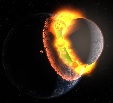| sergejzivkovic | Date: Sunday, 14.06.2015, 10:07 | Message # 1 |
|
Observer
Group: Users
 Pirate
Pirate
Messages: 18
Status: Offline
| My Telescope specification:
Focal Lenth:360mm
Objective Diameter:50mm
EyePieces:4mm,15x and 20mm
*No Barlow Lenses Used(I could use them to increase the magnification,but can just someone tell me how to make them?*
I get about 90x with these properties. I calculated ,using easy formula, how ''bigger'' my magnification with Barlow Lenses is...
Its about 240x bigger with 4mm eyepiece and 4x barlow lenses...But how to make them,can just someone tell me? *Of course I would buy it,but its not fun bro*
|
| |
| |
| Alek | Date: Monday, 15.06.2015, 03:00 | Message # 2 |
 Pioneer
Group: Users
 United States
United States
Messages: 326
Status: Offline
| Why do you make your lenses? wouldn't that actually cost more than just buying them?
Living among the stars, I find my way. I grow in strength through knowledge of the space I occupy, until I become the ruler of my own interstellar empire of sorts. Though The world was made for the day, I was made for the night, and thus, the universe itself is within my destiny.
|
| |
| |
| Spica | Date: Monday, 15.06.2015, 07:10 | Message # 3 |
 Astronaut
Group: Users
 Germany
Germany
Messages: 45
Status: Offline
| Why do you want a higher magnification? With such a small objective diameter you wouldn't see anything at 240x, because the image would get really dark. Maybe you could observe the moon with it, but atmospheric turbulences (seeing) would make the image blurry. These turbulences are one of the reasons I rarely go above x120 with my telescope, which has an diameter of 200mm. Another reason is, that most astronomical objects don't need a high magnification, often only x60. Planets and the moon are sometimes exceptions, but then you need very good seeing.
The most important aspect of an telescope is not its magnification, but its objective diameter. You want to get as much light as possible into your telescope to observe faint objects and to actually see smething at 120x and above, when you need the magnification.
Also barlow lenses are not the best thing to use to achieve a high magnification, because you put another lens system between you and the object. If the barlow lens is cheap and the lenses are not accurate, it can distort and darken the image.
For the money, you would spend on a good barlow lense, you could better buy a telescope with a bigger diameter, maybe 75mm (for open star clusters, planets, the moon) or 120mm (the door to deep-sky objects like nebulas, globular clusters and galaxies). Because with 50mm you can't see much, let alone at high magnification (x30 and above) The diameter is in the range of binoculars and with these you can oberseve the milky way and the moon and planets as tiny discs and light dots.
Of course a new telescope depends on what you want to observe, where you live (the darker the sky the better) and how much money you want (and can) spend.
Astronomy is a very cool and interessting hobby, but unfortunatly also very expensive, when you want to see objects in good quality. 
With your telescope you can observe the objects I named above and not much more, but this alone is already enough in a summer night to explore the universe and look at its beauty (star clusters are awesome!). I know it, because I have also started with such a small telescope. 
But just don't buy or build (building is VERY complicated) a barlow lense! It isn't worth it.
I hope I could help a bit, albeit it's maybe not the answer you expected or wanted to read.
Spica
------------------------------------------------------------------------------------
AMD Phenom II X4 4x3.2 GHz
8 Gb RAM DDR3
GeForce GTX 650 TI 1024 Mb
Edited by Spica - Monday, 15.06.2015, 18:46 |
| |
| |